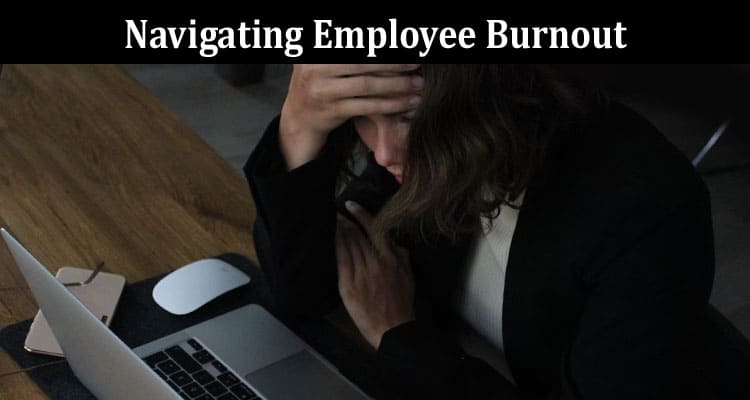In today’s rapidly evolving work environments, the challenge of employee burnout casts a long shadow, threatening both efficiency and team spirit. Amidst our unwavering drive for excellence, the impact on employees’ health—both mental and physical—often remains under the radar until significant damage has occurred. It’s crucial to spot the early indicators of burnout and take proactive steps to nurture a durable team.
We are setting out to dissect the complex issue of employee burnout, examining its various aspects, identifying early warnings, and revealing approaches to alleviate it. As we probe further, we’ll see how adopting time and productivity monitoring software can illuminate the path toward safeguarding employee health.
Understanding Employee Burnout
Employee burnout transcends mere feelings of fatigue or stress; it embodies a complex state marked by deep emotional depletion, a sense of detachment, and a decline in professional effectiveness. This condition arises from an accumulation of various elements, such as overwhelming job demands, limited autonomy in decision-making, and a lack of adequate backing from supervisors.
The impact of this syndrome goes beyond the individual, influencing overall workplace output and team spirit. Notably, over half of all leaders admit to experiencing this form of exhaustion, shedding light on its widespread occurrence even among those at the helm. This revelation calls for immediate and comprehensive action from organizations, emphasizing the need to tackle this challenge at every tier of the workforce.
Recognizing Signs of Burnout
Spotting burnout demands a discerning observation of nuanced hints that surface in diverse guises. They include shifts in conduct, like heightened absenteeism and diminished involvement, alongside bodily manifestations like weariness and headaches, marking a spectrum of signals. Emotional cues such as irritability and cynicism, coupled with cognitive hurdles like faltering focus, additionally underscore the existence of burnout.
Common Causes of Employee Burnout
Frequently, the genesis of employee burnout can be linked to systemic shortcomings entrenched within the workplace structure. Overwhelming workloads coupled with unattainable expectations have the potential to inundate even the most resilient of employees. Likewise, an absence of equilibrium between work and personal life can obscure the boundaries, amplifying stress levels. Additionally, deficient managerial approaches, such as ineffective communication and a failure to acknowledge employees’ contributions, compound feelings of detachment and disenchantment.
Prevention Measures
In the endeavor to counteract burnout, proactive actions assume a crucial stance in nurturing a workforce resilient to stress. The deployment of time-tracking and productivity software facilitates the efficient handling of workloads within organizations, pinpointing possible hindrances and reassigning duties accordingly.
Additionally, fostering accessible avenues for communication and feedback empowers employees to articulate their worries and solicit assistance as required. The provision of resources dedicated to stress alleviation and mental health bolsters the organization’s dedication to safeguarding employee welfare.
Creating a Supportive Work Environment
An encouraging professional setting acts as a fundamental barrier against exhaustion and disinterest. By nurturing an environment where gratitude and acknowledgment are prevalent, we affirm the efforts of our team members, thereby enhancing their feelings of inclusion and drive. Providing avenues for skill enhancement and career advancement not only augments their capabilities but also imbues them with a recognition of purpose and advancement.
Encouraging interpersonal bonds through collective activities builds a strong sense of unity and support, reinforcing the cohesion within the organization. Granting team members the liberty to make decisions and manage their tasks promotes a feeling of responsibility and ownership, diminishing any sense of helplessness and detachment.
Prioritizing Workload Management
Adopting a flexible strategy for assigning work can ease the strain on staff, guaranteeing that tasks are fairly divided according to each person’s abilities and knowledge. Through the use of software that tracks time and productivity, companies can gather information on how work is assigned, pinpointing any disparities and redistributing resources as needed.
Empowering employees to establish achievable objectives and deadlines promotes a feeling of responsibility and authority over their tasks, decreasing the risk of exhaustion and boosting productivity in general.
Nurturing a Culture of Well-Being
Fostering a climate conducive to employee well-being demands a comprehensive strategy that addresses the entirety of individuals’ physical, mental, and emotional welfare. Companies can advance this agenda by implementing measures like wellness programs, mindfulness sessions, and facilitating access to mental health support.
Promoting breaks and leisure time, both within and beyond office hours, facilitates renewal and guards against fatigue. Moreover, advocating for a seamless integration of work and personal life, rather than strict compartmentalization, cultivates equilibrium and mitigates stress. By adopting well-being as a fundamental organizational principle, businesses can establish environments that promote employee flourishing, thereby diminishing the prevalence of burnout.
Final Thoughts
In the unyielding chase for achievement, companies should never ignore the welfare of their most crucial element—their workforce. Spotting the early warnings of exhaustion and initiating pre-emptive measures to block its emergence is essential for maintaining a robust workplace atmosphere.
By adopting proven tactics, ranging from utilizing tech advancements to nurturing an encouraging community, companies can lessen the dangers linked to exhaustion and nurture a flourishing team. As we journey through the constantly shifting work scenery, it’s vital we put the comprehensive welfare of our workforce first, as they represent the core driving force of our enterprises.


